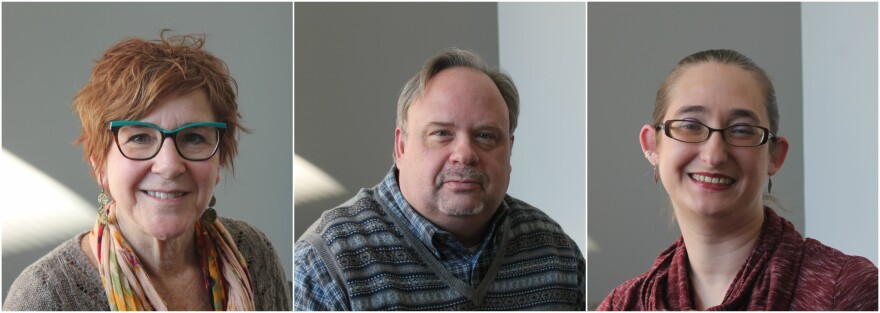Twenty years ago, St. Louis filmmaker Geoff Story went to an estate sale on Lindell Boulevard. There he picked up two canisters of home movies, not knowing what were on them. What Story found shocked him – dozens of gay men at a pool party in a remote location in Hillsboro, Missouri in 1945.
Story’s upcoming documentary, “Gay Home Movie,” will incorporate the home videos as well as interviews with the families and friends of the men in these films. On Thursday’s St. Louis on the Air, host Don Marsh discussed what gay life was like during the 1940s and 50s in St. Louis.
Joining the discussion was Nancy Fowler, arts and culture reporter at St. Louis Public Radio, Steven Brawley, author of "Gay and Lesbian St. Louis" and Miranda Rectenwald, curator of local history at Washington University.
“[The videos are] a really wonderful glimpse. There is not a lot of visual material that exists [of LGBTQ life in the 40s] so this is really a rare gem to have photographs and moving film,” Rectenwald said.
While the home videos did portray openness amongst the party-goers, many of the men in the film would still cover their faces in an attempt to not be seen out of fear of persecution.
Brawley said the film is important for youth to see because they can learn from the experiences of those who came before them – when lesbian and gay couples faced arrests at bars, could not walk together holding hands or host pride festivals.
“It’s about stepping on each other’s shoulders,” Brawley said. “It’s important for younger audiences to know about these struggles and hardships of the past and maybe not take it for granted.”
The film also brings up discussions of race privilege. Brawley said even though the men in the film were gay, they still benefitted from white privilege.
“There are two people of color in the film that we're not sure if they were there as guests or as helpers, servants possibly,” Brawley said. “It's important to recognize that's not what life would have been like for the general LGBTQ population in St. Louis at the time. It wouldn’t have been in a pool party. It would have been very different.”
Various prominent bars and social hangouts for white gays and lesbians also tended to be in mixed-race neighborhoods or areas with lower rent.
“If you hung out in an area where your social circle of neighbors and friends weren't likely to be around, that put you in a safer place, so that is sort of one of the ways we've we really started to think about the way race and gender and sexuality here are really intersecting,” Rectenwald said.
Rectenwald helps manage an LGBTQ mapping project at Washington University. She said after the 40s, gay and lesbian centers clustered mainly around Grand Center, the Central West End and Lafayette Square. But over time, places associated with LGBTQ people spread throughout St. Louis, St. Louis County and Illinois.
“[The mapping project] dispels the myth that there's just one little pocket of where people who are different live or socialize,” she said. “This is something that's throughout our history going back to the thirties, and throughout the whole region.”
Listen to the full discussion:
St. Louis on the Air brings you the stories of St. Louis and the people who live, work and create in our region. St. Louis on the Air host Don Marsh and producers Mary Edwards, Alex Heuer and Lara Hamdan give you the information you need to make informed decisions and stay in touch with our diverse and vibrant St. Louis region.




